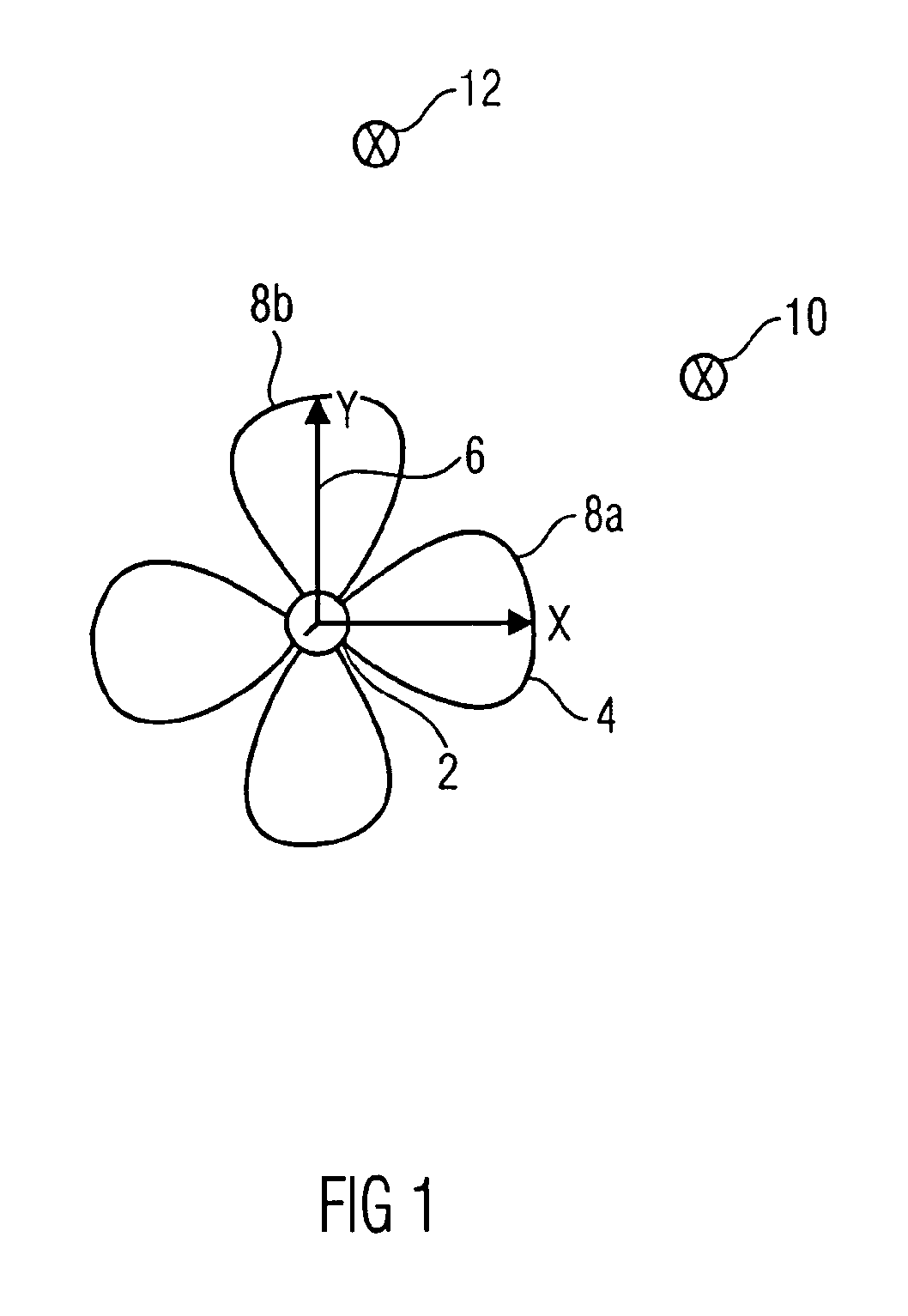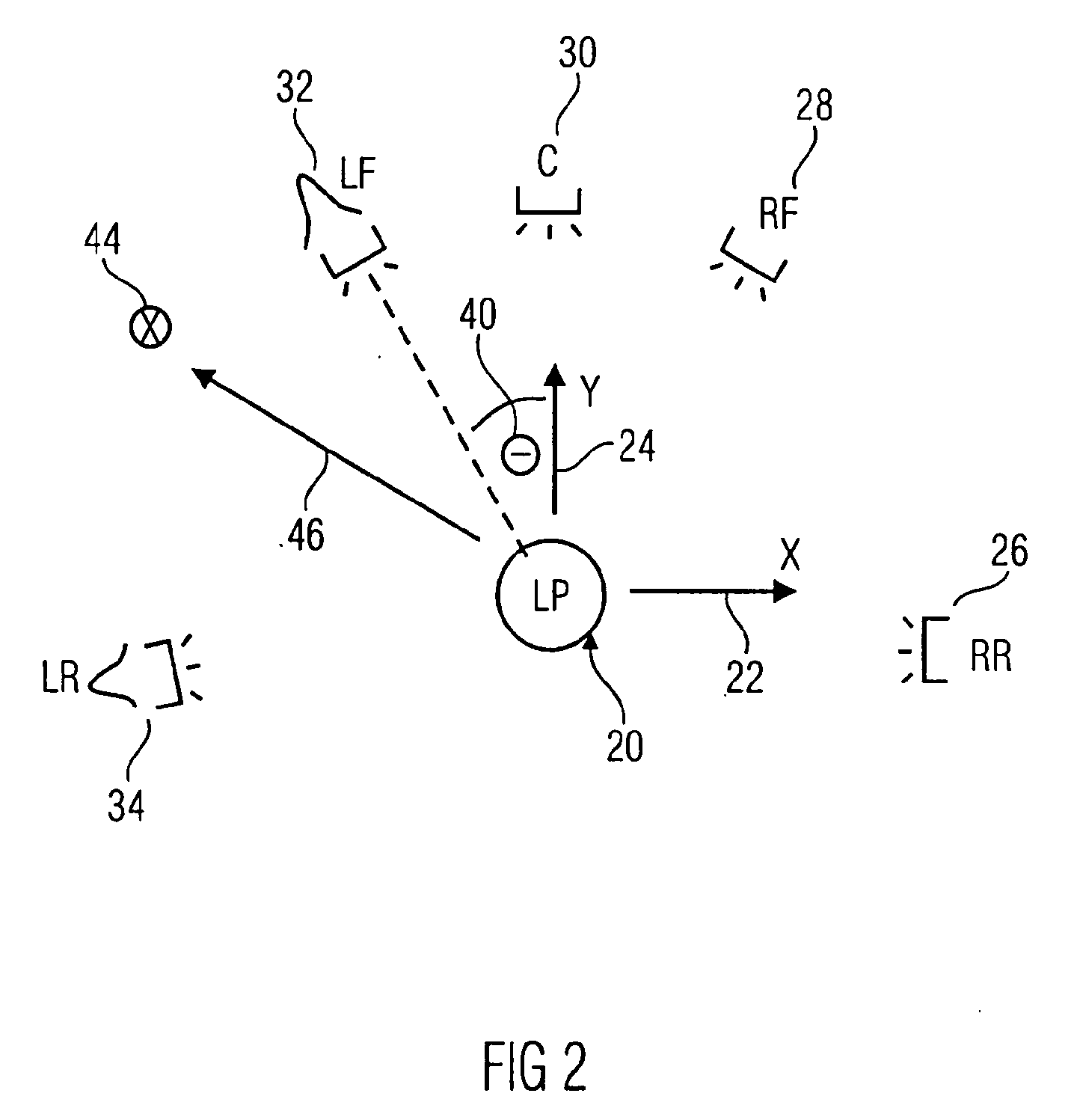Method and Apparatus for Conversion Between Multi-Channel Audio Formats
a multi-channel audio and conversion method technology, applied in the field of multi-channel audio conversion methods and conversion apparatuses, can solve the problems of reducing the reproduction quality, the sound emanating from other directions cannot be reproduced, and the commonly known two-channel stereo setup can only recreate, so as to enhance the reproduction quality of spatial audio signals, without potential loss of precision
- Summary
- Abstract
- Description
- Claims
- Application Information
AI Technical Summary
Benefits of technology
Problems solved by technology
Method used
Image
Examples
Embodiment Construction
[0035]Some embodiments of the present invention derive an intermediate representation of a spatial audio signal having direction parameters indicating a direction of origin of a portion of the spatial audio signal. One possibility is to derive a velocity vector indicating the direction of origin of a portion of a spatial audio signal. One example for doing so will be described in the following paragraphs, referencing FIG. 1.
[0036]Before detailing the concept, it may be noted that the following analysis may be applied to multiple individual frequency or time portions of the underlying spatial audio signal simultaneously. For the sake of simplicity, however, the analysis will be described for one specific frequency or time or time / frequency portion only. The analysis is based on an energetic analysis of the sound field recorded at a recording position 2, located at the center of a coordinate system, as indicated in FIG. 1.
[0037]The coordinate system is a Cartesian Coordinate System, h...
PUM
 Login to View More
Login to View More Abstract
Description
Claims
Application Information
 Login to View More
Login to View More - R&D
- Intellectual Property
- Life Sciences
- Materials
- Tech Scout
- Unparalleled Data Quality
- Higher Quality Content
- 60% Fewer Hallucinations
Browse by: Latest US Patents, China's latest patents, Technical Efficacy Thesaurus, Application Domain, Technology Topic, Popular Technical Reports.
© 2025 PatSnap. All rights reserved.Legal|Privacy policy|Modern Slavery Act Transparency Statement|Sitemap|About US| Contact US: help@patsnap.com



